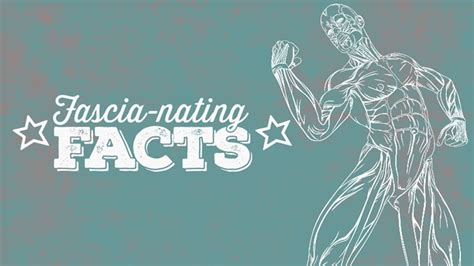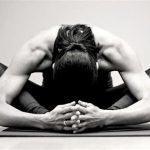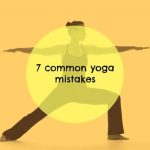The Unique Elements That Define Yin Yoga
Yin Yoga has emerged as a distinctive practice in the world of yoga, offering a blend of mindfulness, physical endurance, and spiritual grounding. Though slower and less dynamic than many other yoga styles, it serves a unique purpose for both body and mind. In this article, we’ll explore the nuances that set Yin Yoga apart, delving into its historical roots, current practices, and future directions. We’ll also address key concepts, ethical considerations, and how this yoga practice can be applied in real-life scenarios.
Introduction
Unlike the fast-paced flow of Vinyasa or the intense strength-building of Ashtanga, Yin Yoga emphasizes slow, passive stretches that target deep connective tissues rather than focusing on muscles. Yin Yoga offers a counterbalance to the yang (more active) forms of yoga, cultivating stillness and introspection. This practice stands out for its long-held poses, use of props, and emphasis on relaxation. But what makes it truly special is its accessibility to people of all skill levels and its ability to foster deep physical, emotional, and mental release.
Key Concepts of Yin Yoga
- Passive Stretches: Yin Yoga is characterized by the use of passive stretches held for extended periods—anywhere from two to five minutes or longer. This allows the muscles to relax, targeting deeper connective tissues like ligaments, tendons, and fascia.
- Stillness and Surrender: Yin emphasizes finding stillness in a pose and remaining there, observing both the body’s physical sensations and the mind’s response.
- Energy Flow: The practice encourages the free flow of energy (Qi or Prana) through the body’s meridian lines, inspired by Traditional Chinese Medicine.
- Mindfulness and Meditation: Yin Yoga often incorporates mindfulness techniques, fostering a meditative state throughout the practice.
- Use of Props: Props such as blocks, bolsters, and blankets are often used to support the body in various poses, enhancing comfort and allowing deeper relaxation.
Historical Context
Yin Yoga has roots in both ancient Taoist practices and the more recent influences of modern yoga pioneers. Its origins can be traced back to Taoist principles, particularly those related to cultivating energy through stillness. However, the practice as we know it today was popularized in the late 20th century by Paul Grilley and Sarah Powers, who combined traditional Hatha yoga postures with an understanding of Chinese meridian theory. Grilley was heavily influenced by Taoist Yoga and martial arts, which informed his belief that the body needs both passive and active (yin and yang) forms of practice for balance.
Current State Analysis
In recent years, Yin Yoga has grown in popularity as a practice complementary to more active forms of yoga and exercise. The current state of Yin Yoga is influenced by increasing global awareness of mental health, the need for stress management, and an interest in holistic well-being. Yoga studios across the world offer Yin Yoga classes, often catering to a diverse range of practitioners, from beginners looking for a gentle introduction to yoga to experienced athletes and yogis seeking balance in their high-intensity routines.
Despite its rise, there are also misconceptions about Yin Yoga. Some believe that its slower pace makes it less effective, while others see it as “easier” than other forms. However, this underestimates the mental and physical endurance required to hold postures for extended durations. These perspectives can be addressed by focusing on how Yin Yoga, through its unique slow pace and deep intensity, cultivates resilience and flexibility, both physically and mentally.
Practical Applications of Yin Yoga
Yin Yoga is an accessible practice that can benefit a variety of individuals, from athletes seeking recovery to office workers needing relief from tension. Below are several practical applications:
- Stress Management: The long holds in Yin Yoga encourage a deep release of tension, helping practitioners manage stress and anxiety.
- Injury Prevention and Recovery: Yin’s focus on connective tissue helps maintain joint mobility, which is essential for injury prevention and rehabilitation.
- Improved Flexibility: Regular practice can increase flexibility in the hips, spine, and pelvis, making it an excellent complement to more dynamic activities.
- Enhanced Mindfulness: Yin Yoga’s focus on stillness and observation strengthens mindfulness and emotional resilience.
- Chronic Pain Relief: The gentle, passive nature of Yin Yoga makes it a suitable practice for those dealing with chronic pain, such as back pain or arthritis.
Case Studies: Real-Life Impact of Yin Yoga
| Case | Problem | Yin Yoga Application | Outcome |
|---|---|---|---|
| Athlete Recovery | Overuse injuries and muscle tightness | Incorporation of Yin Yoga for deep tissue release and improved flexibility | Reduced injury recurrence, faster recovery times, enhanced flexibility |
| Office Workers | Chronic back and neck pain from sitting | Regular Yin Yoga practice targeting spinal release and hip flexibility | Reduction in pain, improved posture, better focus and productivity |
| Chronic Stress | Persistent anxiety and difficulty relaxing | Mindfulness-centered Yin Yoga sessions | Increased ability to manage stress, improved mental clarity and emotional resilience |
Stakeholder Analysis
The practice of Yin Yoga affects a variety of stakeholders, including yoga instructors, practitioners, healthcare professionals, and even wellness businesses. Instructors must be knowledgeable about anatomy and the use of props to ensure the safety of their students. Healthcare professionals, such as physical therapists, are increasingly incorporating Yin Yoga as a complementary therapy. Wellness businesses have recognized the commercial potential of Yin Yoga, incorporating it into retreats and wellness programs.
Implementation Guidelines for Yin Yoga
- Environment: Yin Yoga should be practiced in a calm, quiet space with dim lighting to promote relaxation.
- Props: Use of props like bolsters, blocks, and blankets is essential to support long holds and ensure comfort.
- Duration: Each pose should be held for at least 3 to 5 minutes, allowing time for connective tissues to engage and release.
- Breathwork: Deep, mindful breathing should accompany every pose to encourage relaxation and maintain focus.
- Body Awareness: Practitioners should be encouraged to listen to their bodies and never push beyond their comfort level.
Ethical Considerations
As with any physical practice, Yin Yoga poses ethical challenges. One primary concern is the risk of overstretching and injury due to the passive nature of the practice. Instructors must be vigilant in offering modifications and emphasizing safety. Additionally, cultural appropriation remains a topic of discussion, as Yin Yoga blends concepts from both Eastern and Western traditions. Practitioners and teachers must approach the practice with respect for its origins and ensure that cultural elements are not commodified without understanding their significance.
Limitations and Future Research
While Yin Yoga is highly beneficial, it is not without its limitations. Some practitioners may experience discomfort in the joints or overstretching if they push too hard. Additionally, Yin Yoga should not be seen as a cure-all for stress or physical tension; rather, it should be integrated with other wellness practices for a holistic approach. Further research is needed to better understand the long-term effects of Yin Yoga on connective tissues and how it can be tailored to individuals with specific health conditions, such as arthritis or chronic pain.
Expert Commentary
Yin Yoga continues to offer a unique and valuable approach to physical and mental well-being. While it may not offer the sweat and burn of other yoga practices, its deeper, more meditative aspects provide something just as important: resilience. Experts agree that the real strength of Yin Yoga lies in its ability to teach practitioners how to surrender, slow down, and face discomfort with patience. In a fast-paced world, this balance is more essential than ever.








